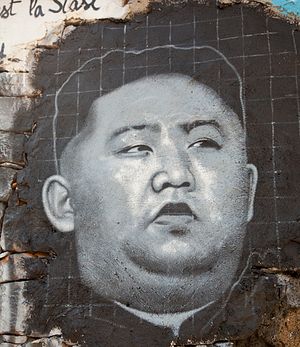On Tuesday morning, North Korea’s state-run Korean Central News Agency (KCNA) released a statement noting that, after consideration, Kim Jong-un, the country’s supreme leader, had decided not to proceed with an order to carry out the launch of four intermediate-range ballistic missiles (IRBMs) with the intention of striking the waters near the U.S. territory of Guam.
Tuesday’s statement followed an unusual statement last week that outlined a specific trajectory for a prospective four-missile test involving Hwasong-12 IRBMs, noting that the preparations for a launch were nearing completion and would await Kim Jong-un’s approval this week.
Tuesday’s statement is not entirely unexpected. Had North Korea proceeded with the launch outlined last week, it would have been the most provocative action it had ever taken directly against U.S. territory. On Monday, U.S. Defense Secretary Jim Mattis even noted that it could provoke the United States to retaliate militarily.
That North Korea chose not to proceed is not surprising, but is not easily explained away by suggesting that it was successfully deterred by the United States.
First, by deciding not to proceed with the launch, Kim appears to have expressed an intent to deescalate. Tuesday’s statement includes a paragraph that begins “In order to defuse the tensions and prevent the dangerous (sic) military conflict on the Korean peninsula” and goes on to open the door to an exchange on equal terms with the United States — something akin to the “freeze for freeze” proposal that has seen Chinese and Russian backing recently. (Astute readers of last week’s KCNA statement had detected a possible overture to talks.)
Second, given the way last week’s statement framed the test — as an operational plan that would require Kim’s decision — the decision to deescalate does not necessarily read as capitulation to U.S. threats. Instead, Kim was able to simply make a choice not to give the order. In the process, he was able to set up a highly provocative coercive bargaining scenario and then proceed to walk himself back. The threat to strike Guam eventually, however, remains on the table.
Third, it is notable that between the release of the first Guam statement last week and Tuesday’s statement, the United States did not carry out any B-1B Lancer patrols as part of U.S. Pacific Command’s continuous bomber presence in the Pacific. North Korea had specifically underlined B-1B flights as its chief concern, prompting it prepare for preemptive ballistic missile strikes against Guam. The U.S. decision not to fly B-1Bs may have been happenstance, in this case; flights tend to occur with an interval greater than seven days.
This too leaves open the possibility that this entire North Korean attempt at setting up an overture for talks is effaced the next week by the United States carrying on as if nothing exceptional had occurred. Another B-1B patrol before the start of the U.S.-South Korea Ulchi-Freedom Guardian 2017 exercises in a week would do the trick.
In the meantime, as Adam Mount has highlighted in these pages this week, the entire IRBMs-to-Guam episode can be read as a concerning example of North Korea leveraging its new long-range missile capabilities for new types of coercion. Rewarding its coercive setup and drawdown with a temporary freeze of B-1B flights may encourage future episodes of similar brinkmanship as well.
Either way, last week’s KCNA statement and this week’s drawdown both mark an interesting case in North Korea’s attempts at opening a door for negotiation, albeit under self-serving terms. We’ll have to wait and see if this was a one-off attempt at coercion or a model that may soon see repetition.

































